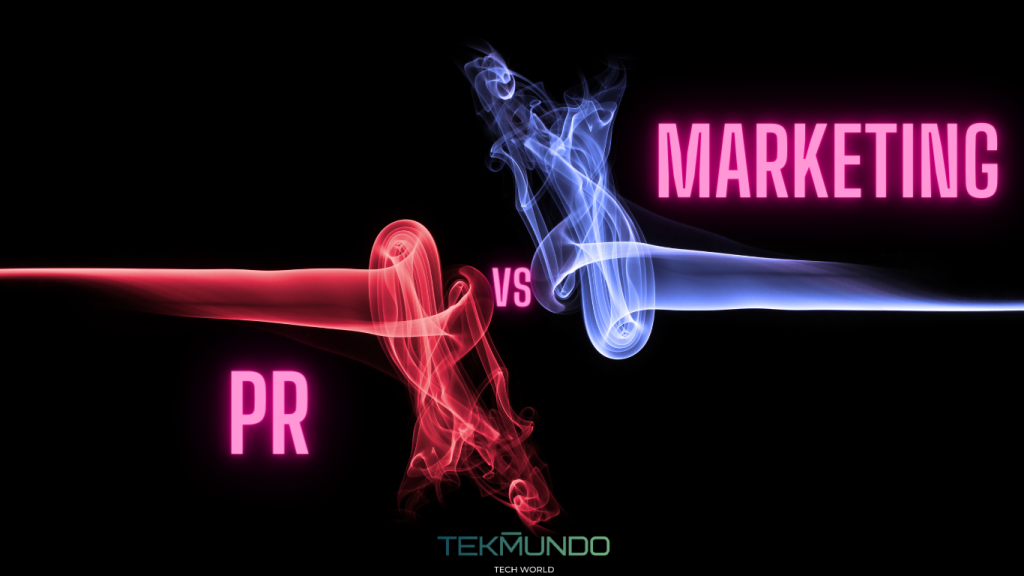In the dynamic landscape of 2024, understanding the distinctions between Public Relations (PR) and Marketing is crucial for businesses aiming to navigate effectively through the complexities of the digital age.
This article delves into both fields’ nuances, objectives, and strategies, highlighting their evolving roles in today’s interconnected world.
Historical Background
Historically, PR and Marketing have distinct origins. PR’s roots are in managing public perception and media relations, evolving significantly with the advent of social media and online platforms.
Traditionally focused on promoting products and services, marketing has expanded its scope with digital technologies, leveraging data analytics and online advertising to reach target audiences more effectively.
Market Overview: PR vs. Marketing
These statistics reflect the substantial growth and investment in both PR and Marketing industries, with a notable emphasis on digital channels.
- The global public relations industry is expected to grow at a CAGR of 7.9% from 2021 to 2026.
- In the United States, the PR industry was projected to reach $15.7 billion in 2022, up from $14.2 billion in 2020.
- Digital advertising spending is forecasted to reach $602.25 billion globally in 2023. The United States will have the largest ad spending globally, with an estimated $232.70 billion.
- The digital marketing industry is predicted to reach $807 billion by 2026.
Different Core Objectives and Strategies
In 2024, PR primarily aims to build and manage a company’s reputation, handle crisis communications, and maintain positive relations with the media and public. It’s about storytelling and creating narratives that resonate with various stakeholders.
On the other hand, Marketing focuses on driving sales, enhancing brand visibility, and engaging customers through targeted campaigns. While PR builds credibility and trust, Marketing seeks to stimulate demand and customer loyalty.
Target Audiences For PR
- Media Professionals:
PR engages journalists and editors through press releases and media briefings and builds relationships with industry-specific publications for targeted exposure.
- Stakeholders and Investors:
PR uses annual reports, newsletters, and specialized communications to inform stakeholders. They also host investor relations events and webinars to maintain transparent communication.
- General Public:
PR leverages social media platforms for wider outreach and engagement. It also involves organizing public events, community programs, and sponsorships to enhance brand image.
Communication Channels For PR
- Press Conferences: For major announcements or crisis management.
- Social Media: Platforms like Twitter, LinkedIn, and Facebook for ongoing engagement.
- Corporate Websites: Central hub for news, corporate values, and CSR initiatives.
- Special Events: Product launches, partnership announcements, and community engagement activities.
Metrics for Success in PR
- Media Coverage Quality:
Analysis of sentiment, reach, and frequency of media coverage.
Monitoring brand mentions in the press and online.
- Public Sentiment:
Social media sentiment analysis and public opinion polling.
Feedback from public forums and community engagements.
- Stakeholder Engagement:
Measuring engagement rates on investor and stakeholder communications.
Assessing feedback from stakeholder surveys and focus groups.
- Crisis Resolution Effectiveness:
Speed and effectiveness of crisis communication responses.
Post-crisis analysis of brand perception and trust.
Target Audience For Marketing
- Potential Customers:
Marketing targets through demographic and psychographic segmentation in advertising campaigns. It utilizes social media advertising and search engine marketing to reach new audiences.
- Existing Customers:
Marketing strategies involve email marketing campaigns for upselling and cross-selling. It also includes loyalty programs and exclusive offers to retain and engage.
- Business Partners:
B2B marketing strategies for collaborations and partnerships make up for successful marketing campaigns involving trade shows, industry events, and co-marketing initiatives.
Communication Channels For Marketing
- Online Advertising: Google Ads, social media ads, and display networks.
- Email Marketing: Personalized communication for promotions and updates.
- Social Media Marketing: Engaging content on platforms like Instagram, TikTok, and Twitter.
- Retail Promotions: In-store displays, point-of-sale promotions, and sales events.
Metrics for Sucess in Marketing:
- Sales Performance:
Tracking sales figures and comparing against targets and historical data.
Analyzing sales data by product, region, and channel.
- Market Share:
Assessing the brand’s share in the target market compared to competitors.
Monitoring trends in market share growth or decline.
- Customer Acquisition and Retention Rates:
Tracking new customer sign-ups and retention rates.
Analyzing the effectiveness of customer acquisition campaigns.
- Return on Investment (ROI):
Calculating the ROI of marketing campaigns and strategies.
Utilizing analytics to understand the cost per acquisition and customer lifetime value.
Interplay Between PR and Marketing In 2024
Here comes the interesting part; both PR and marketing strategies go side-by-side with one another to take businesses to new heights:
Content Marketing:
- Combining PR’s storytelling with Marketing’s promotional tactics in blogs, videos, and social media content.
- Leveraging PR content for marketing purposes, such as customer testimonials and success stories.
Brand Messaging:
- Aligning PR narratives with marketing campaigns ensures consistent brand messaging across all channels.
- Collaborative efforts in managing brand reputation and promotional activities.
Integrated Marketing Communications:
- Using a mix of PR and Marketing tactics in unified campaigns for a cohesive brand experience.
- Combining PR’s focus on trust and relationship-building with Marketing’s customer engagement and conversion strategies.
Digital Strategies:
- Leveraging social media for PR and Marketing objectives, blurring the lines between the two.
- Utilizing digital tools and analytics to measure the impact of combined PR and Marketing efforts.
Conclusion
Understanding the differences and similarities between PR and Marketing is vital for any business in 2024. At the same time, PR focuses on reputation and relationships and marketing zeroes in on sales and customer engagement.
They form a comprehensive approach to external communications in an increasingly digital and interconnected world. As we move forward, the collaboration between these two fields will likely grow, adapting to the ever-changing landscape of media and consumer behavior.






